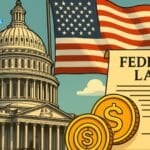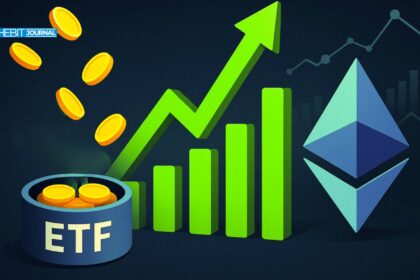The Fed meeting, convened by the United States Federal Reserve, comes at a critical juncture as global financial markets experience severe turmoil. This emergency meeting is intended to reassess interest rates and respond to the escalating concerns within global markets. As reported by The BIT Journal, financial experts anticipate a 50 basis points (bps) rate cut following this crucial Fed meeting.
Global markets are currently in a state of significant decline. The Japanese yen has dropped by 13%, while the markets in Korea and Taiwan have seen around a 10% decrease.

Bitcoin’s value has taken a sharp hit, dropping 21% over the past week. Additionally, S&P futures have fallen by 4%. In this climate, the Fed meeting is essential for addressing these worrying trends.
Urgency of the Fed Meeting
The Fed meeting is seen as a necessary intervention amid ongoing financial instability. The reversal of the cash and carry trade in Japan has sparked global panic, prompting this urgent response. Experts are now predicting a 0.5% interest rate cut, reflecting the critical nature of the situation. The likelihood of a rate decrease in September is now at 100%, highlighting the urgency.
The Federal Reserve has a history of using interest rate cuts to stabilize the economy, particularly during crises such as the 2007–2008 financial downturn. The current Fed meeting aims to replicate this strategy, providing relief to prevent further economic uncertainty. Market observers suggest that a rate cut could offer much-needed respite.
During this Fed meeting, a significant rate cut is expected. The BIT Journal reports that the Federal Reserve might lower interest rates by 0.5%. This decision is in response to the drastic declines observed in markets worldwide, including a 13% drop in the Japanese yen and substantial decreases in Korean and Taiwanese markets. Bitcoin’s value has also decreased by 21% in the last week, with S&P futures down by 4%.

Not all experts agree on the potential impact of the anticipated rate cut. Peter Schiff, a well-known economist and Bitcoin critic, has expressed concerns that reducing interest rates could push the U.S. economy into a recession. His cautionary stance adds another layer of complexity to the Fed’s decisions.
Today’s Fed meeting is pivotal. The global financial market’s alarming trajectory necessitates immediate action from policymakers. The anticipated 50 bps rate cut is considered essential for stabilizing the economy. The Federal Reserve’s track record, particularly during the 2007–2008 financial crisis, underscores the importance of this approach.
Fed’s Emergency Meeting: 0.5% Rate Cut Predicted to Combat Global Market Turmoil
The Fed meeting highlights the interconnectedness of global economies. The financial turmoil in Japan, driven by the reversal of the cash and carry trade, has led to widespread market declines. This emergency meeting by the Fed aims to address these issues and restore stability. Experts predict a 0.5% interest rate cut to calm the markets, with a 100% chance of a rate decrease in September.

The Federal Reserve’s strategy of cutting interest rates during economic crises is well-documented. The 2007–2008 financial crisis serves as a notable example. This meeting aims to offer relief and prevent further economic instability. Market observers believe a rate cut could provide the necessary respite.
In conclusion, the recent Fed meeting held by the United States Federal Reserve highlights the intense turbulence impacting global markets. The primary agenda of this session is to evaluate current interest rates, aiming to implement measures that could foster economic stability. As the market fluctuates, the attention turns towards the Federal Reserve’s ability to manage these challenges effectively. Experts have forecasted a potential 50 basis points reduction in rates, a significant move expected to help stabilize the market and curb the economic downturn.
The situation demands prompt and decisive actions from monetary policymakers. The anticipated rate cut is seen as a critical step towards mitigating the adverse effects of market volatility. As these developments unfold, The BIT Journal remains committed to delivering timely and accurate updates, ensuring its readers are well-informed about the consequences of these financial adjustments and their potential impacts on both global and domestic economic landscapes.





























